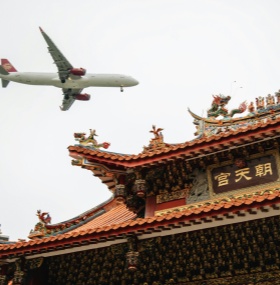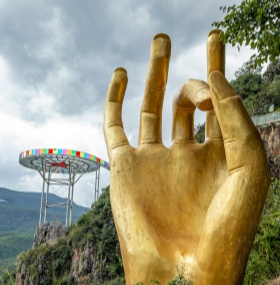Traveling to foreign countries is an exciting and enriching experience, but for many, one of the most common challenges is language barriers. Whether you're exploring vibrant cities or remote areas, not speaking the local language can make communication difficult. However, with the right approach and tools, overcoming language barriers is not as daunting as it may seem. Here are some practical strategies to help you communicate effectively during your travels, no matter where you go.
1. Learn Basic Phrases Before You Travel
Learning a few essential phrases in the local language can make a huge difference, even if you're not fluent. Focus on greetings, polite expressions, and other commonly used phrases like:
"Hello"
"Thank you"
"How much?"
"Excuse me"
"Where is...?"
Tip: Even a small effort to speak the local language is often appreciated by locals and can help create a positive impression. Language learning apps like Duolingo, Memrise, and Babbel can help you quickly learn the basics.
2. Download Translation Apps
Technology has revolutionized communication, and smartphone translation apps can be lifesavers when traveling. Apps like Google Translate, iTranslate, or Microsoft Translator allow you to translate written and spoken text in real-time, making it easier to understand signs, menus, and conversations.
Tip: Many translation apps work offline as well, so download the language packs for your destination country ahead of time to avoid any connectivity issues while on the go.
3. Use Gesture and Body Language
Sometimes, words aren't enough to convey your message, and that's when gestures and body language can come to the rescue. Simple hand signals, facial expressions, and miming actions can be very effective in overcoming language barriers. Pointing at objects or using gestures to indicate direction can also help you make yourself understood.
Tip: While gestures can help, be aware that some gestures may have different meanings in different cultures, so always pay attention to what’s culturally acceptable.
4. Carry a Phrasebook or Pocket Guide
If you prefer not to rely entirely on technology, a phrasebook or pocket guide can also be a useful tool. These guides typically contain useful phrases and vocabulary tailored for travelers, helping you communicate in common situations such as ordering food, asking for directions, or booking transportation.
Tip: Choose a phrasebook with phonetic translations or audio recordings to help with pronunciation, especially if you're traveling to a region with a particularly difficult language.
5. Stay Patient and Open-Minded
Effective communication involves both speaking and listening, and it's important to remain patient when there's a language barrier. Misunderstandings are bound to happen, but they don’t have to derail your experience. Be open to trying alternative ways of communication, whether that's through visuals, written words, or simplified speech.
Tip: If you don’t understand something, don’t hesitate to ask the person to repeat or clarify. Staying calm and patient will help keep things positive and prevent frustration.
6. Use Visual Aids and Technology
In addition to apps, carrying a notebook or using your smartphone to show images or maps can help break down language barriers. For example, showing a picture of the food you want to order can help if the menu is in a language you don’t speak. Similarly, pointing to a location on a map when asking for directions can help avoid confusion.
Tip: Using a map with landmarks or visuals from apps like Google Maps can also help you find your way around or ask for directions more effectively.
7. Hire a Local Guide or Translator
For more complex situations, hiring a local guide or translator can greatly ease communication. Not only will a professional help bridge the language gap, but they can also provide cultural insights and help navigate local customs, ensuring you have a smooth and enriching experience.
Tip: Many tour companies offer guide services, and it’s often possible to book a translator for specific outings or activities.
8. Take Advantage of Visual and Contextual Clues
When language barriers arise, try to pick up clues from the surrounding environment. Look for visual cues, such as symbols or signs that can give you clues about what's being discussed or asked. Context also plays a large role—often, you can understand the general meaning of a conversation through body language, facial expressions, and the setting.
Tip: Stay alert to your surroundings and try to gather as much context as possible to piece together meaning. Sometimes a good guess can help solve the puzzle.
9. Slow Down and Use Simple Words
When speaking to someone who doesn’t share your language, it's important to slow down and use simple, clear language. Avoid idiomatic expressions, slang, or complex words that could confuse the listener. Opt for short sentences and repeat your message if necessary.
Tip: Speak slowly and clearly without raising your voice. This will help the person you're speaking with understand you better, even if they don't speak English or your native language.
10. Show Respect and Appreciation
Language barriers often require more than just words—they require a respectful attitude and an understanding that communication may take a bit more time and patience. Showing respect and appreciation for the local language can go a long way in creating positive interactions.
Tip: Even if you can’t communicate perfectly, your effort to speak the local language and your respectful attitude will be recognized and appreciated by locals.
While language barriers can seem intimidating, with the right approach and tools, you can overcome these obstacles and have a rewarding travel experience. By learning basic phrases, using translation apps, relying on non-verbal communication, and staying patient and respectful, you'll find that language is no longer a barrier but a bridge to deeper connections and more enriching cultural experiences. So don’t let a lack of language skills stop you from exploring the world—embrace the challenge, and watch your travels become even more memorable.
Related Posts
Create Your Customized Trip
Take about 2 minutes to fill the form to tell us how you like to travel, and get a reply within 1 working day.








